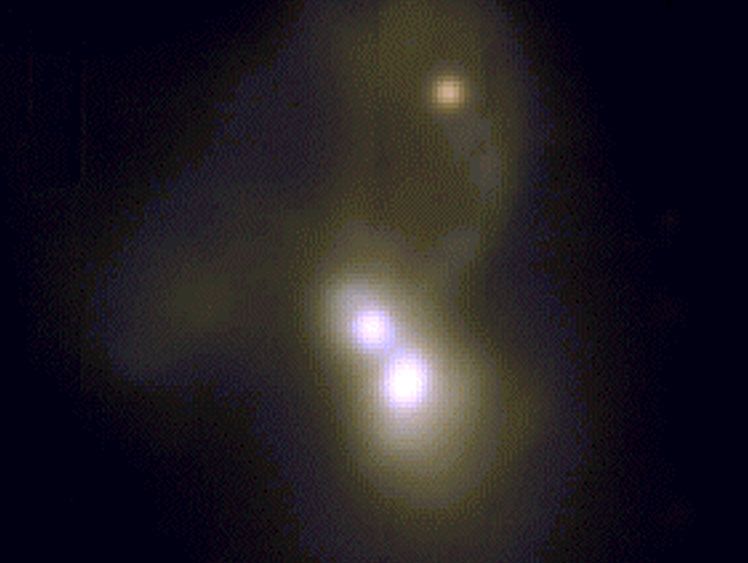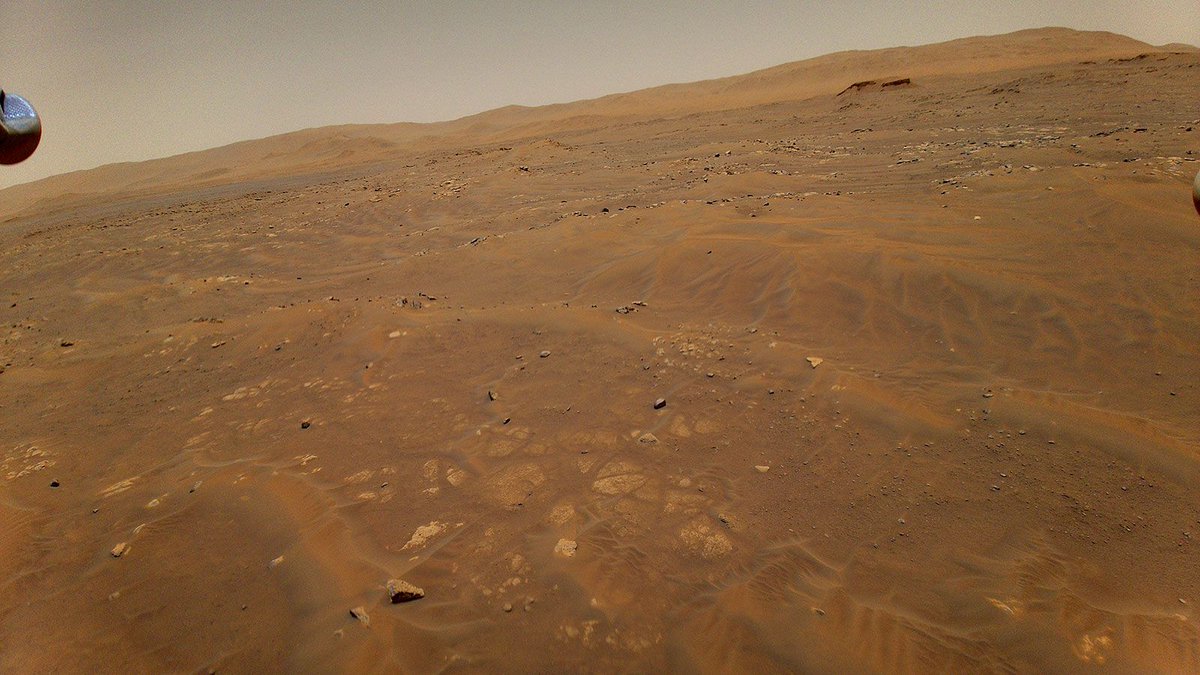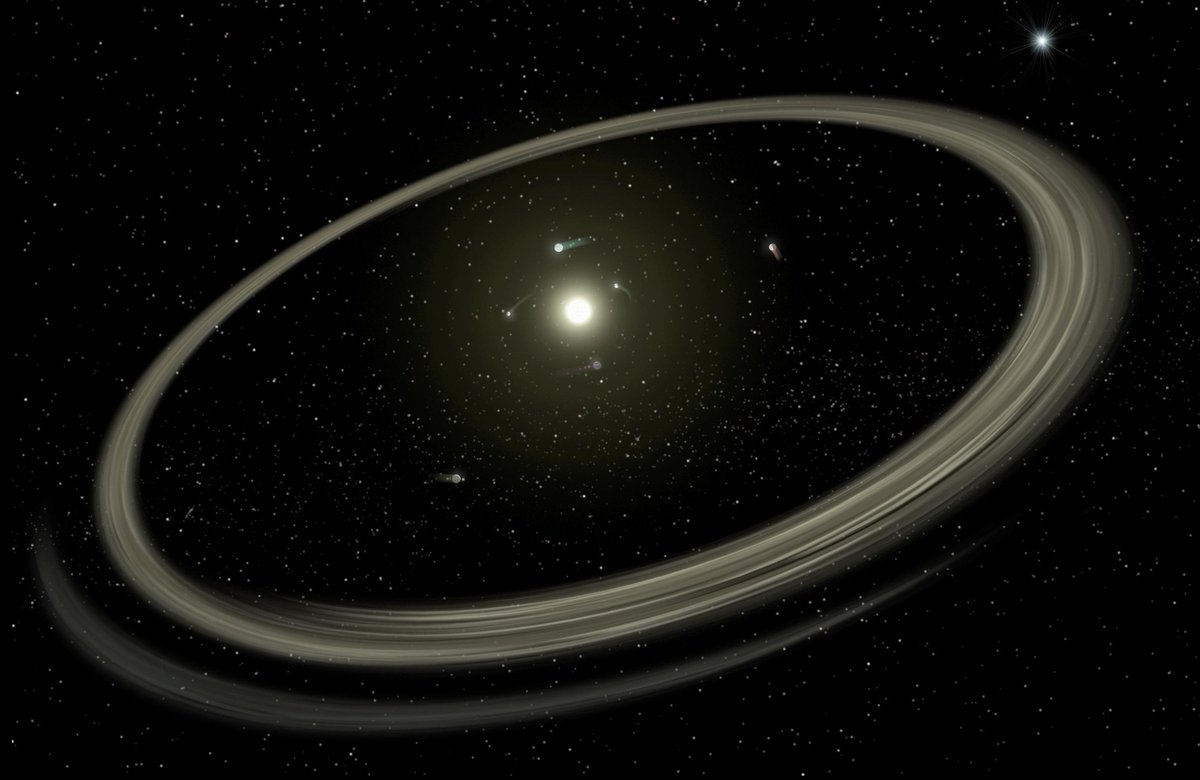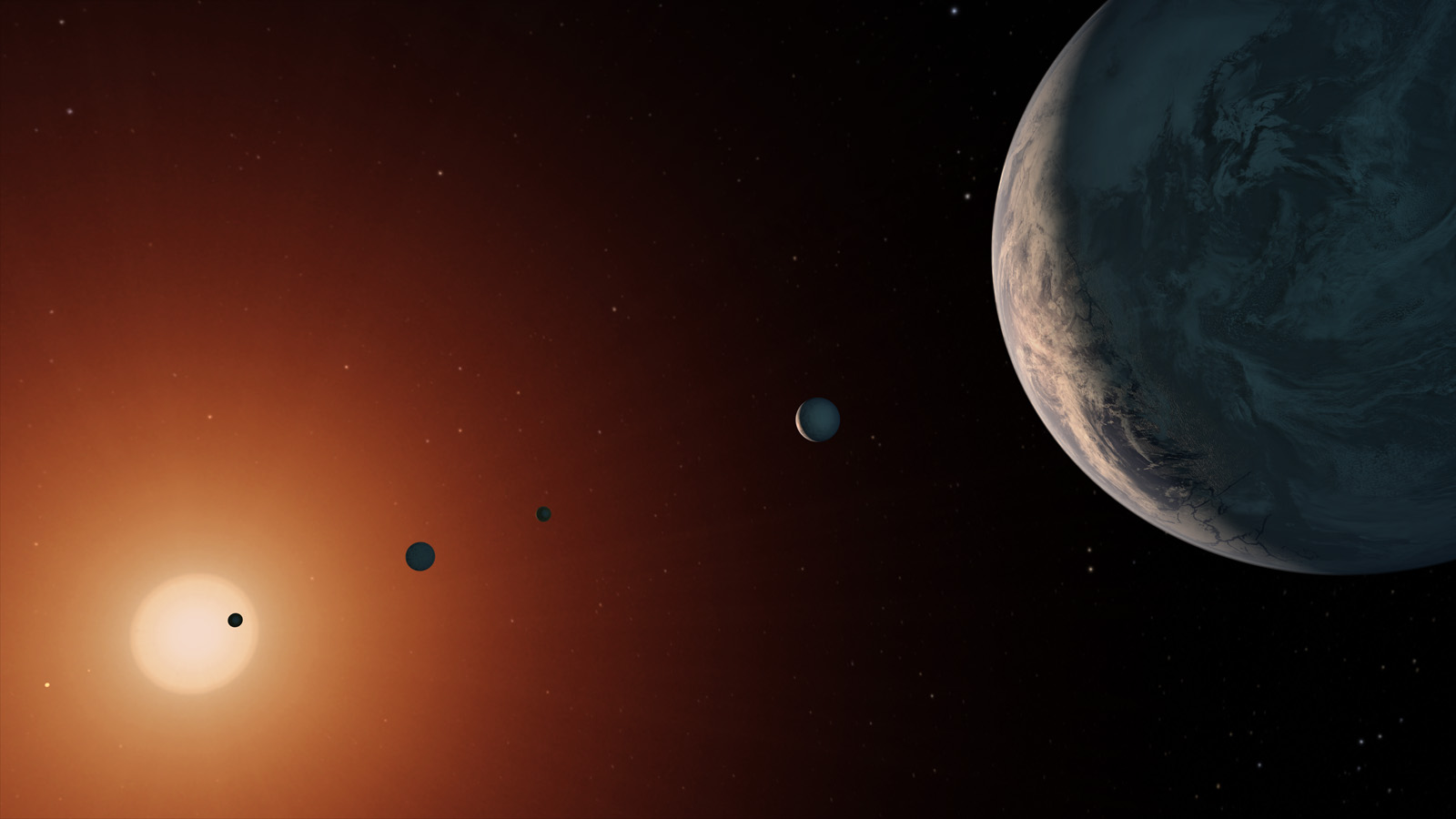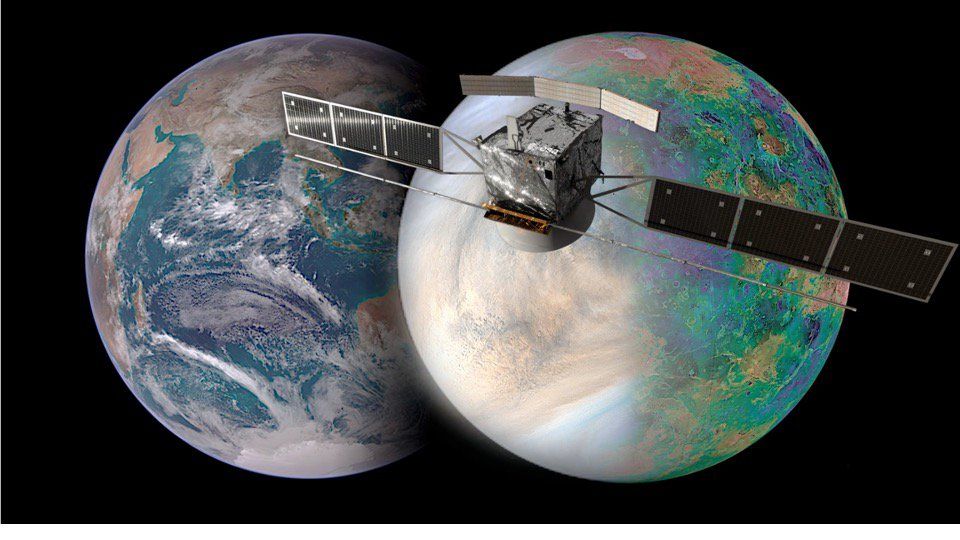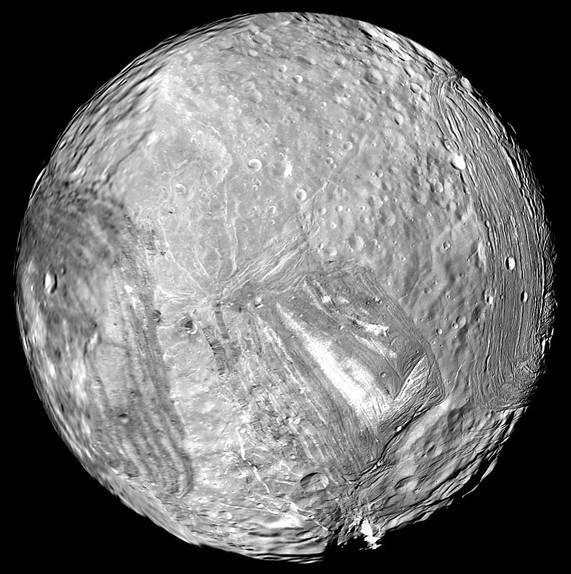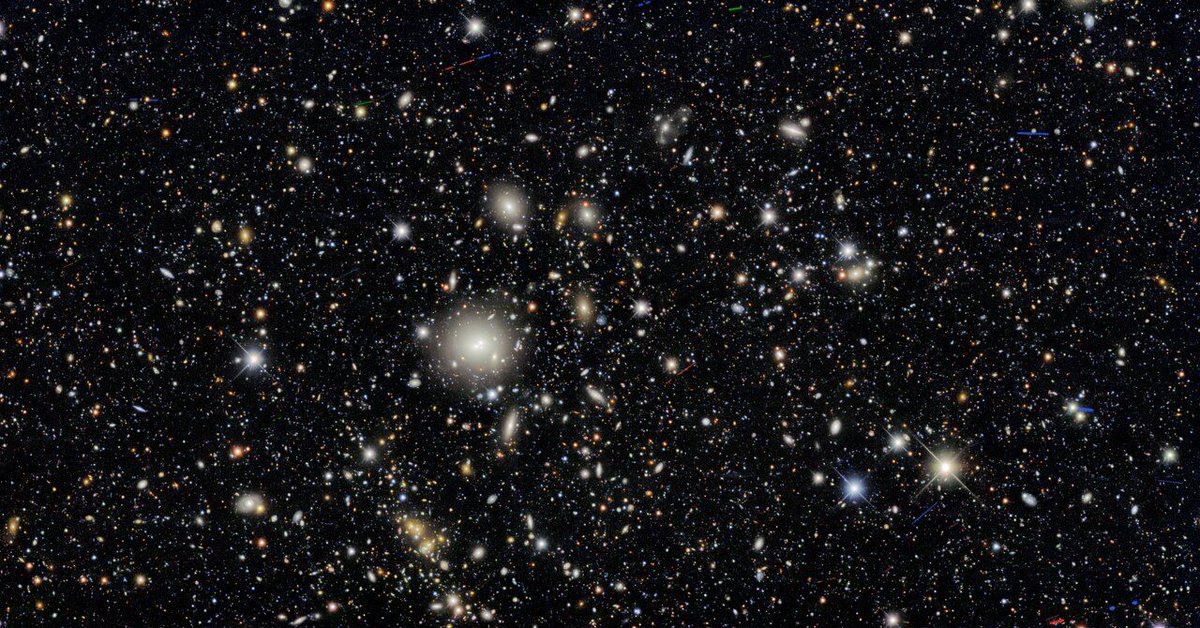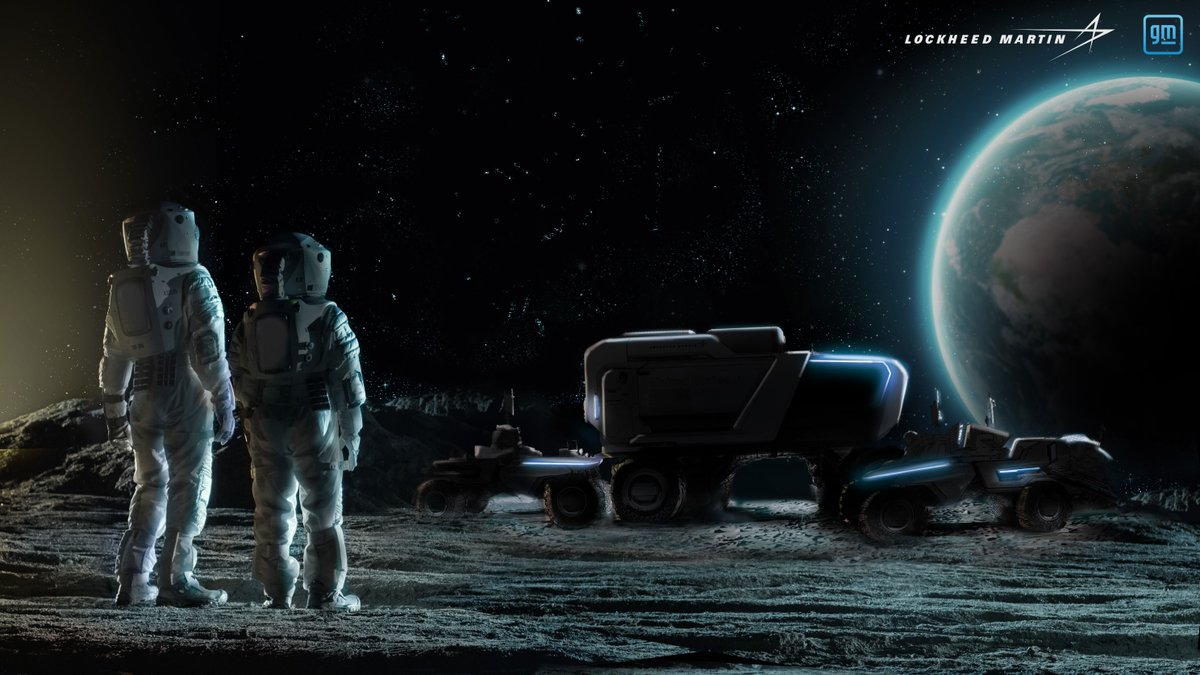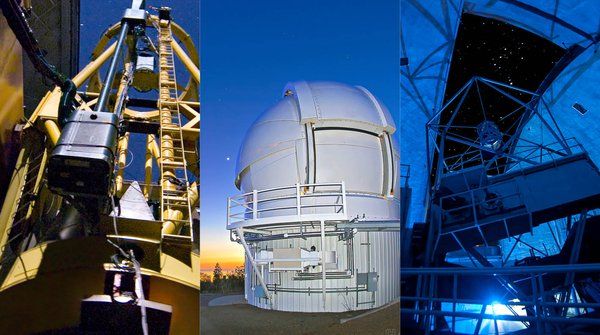One of the best things about that universe is that there is so much to it. If you look hard enough, you can most likely find any combination of astronomical events happening. Not long ago we reported on research that found 7 separate instances of three galaxies colliding with one another. Now, a team led by Jonathan Williams of the University of Maryland has found another triple galaxy merging cluster, but this one might potentially have two active supermassive black holes, allowing astronomers to peer into the system dynamics of two of the universe’s most extreme objects running into one another.
Continue reading “Rare Triple Galaxy Merger With at Least Two Supermassive Black Holes”Iridescent Clouds on Mars Seen by Curiosity
Laying on a grassy field staring at the cloud formations in the sky and coming up with harebrained ideas about their shapes is a common feature in childhood summers – at least as they’re portrayed in media. Someday that image might translate to a child laying on a sandy or rocky outcropping, looking up at the sky seeing iridescent, shimmering clouds in the sky. The biggest differences would be that the child would be looking through a visor, and those clouds would be on Mars. And Curiosity recently released some stunning images of what they might look like.
Continue reading “Iridescent Clouds on Mars Seen by Curiosity”It’s Time for Perseverance to get to Work
Given all of the news surrounding the landing and first few months of operation of the Perseverance rover on Mars, it might be surprising that its actual science mission hasn’t even started yet. That changed on June 1st when the rover officially kicked off its first science mission by leaving its landing site.
Continue reading “It’s Time for Perseverance to get to Work”What’s the Connection Between the Chemistry of a Star and the Formation of its Planets?
Scientists seem to have come up with a new parlor game – how many ways can we potentially detect exoplanets? The two most common methods, the transit method and the Doppler method, each have their own problems. Alternative methods are starting to sprout up, and a new one was recently proposed by Jacob Nibauer, an undergraduate student in the University of Pennsylvania’s Department of Physics and Astronomy. His suggestion: look at a star’s chemical composition. And his findings after analyzing data on some 1,500 stars hold some surprises.
Continue reading “What’s the Connection Between the Chemistry of a Star and the Formation of its Planets?”How To Search the Chemical Makeup of Exoplanet Atmospheres for Hints at Their History
Author’s note – this article was written with Dr. Vincent Kofman, a scientist at NASA’s Goddard Space Flight Center (GSFC), working in the Sellers Exoplanet Environments Collaboration (SEEC), and the lead author on the research it discusses.
Thousands of exoplanets have been discovered in the recent decades. Planet hunters like TESS and Kepler, as well as numerous ground-based efforts, have pushed the field and we are starting to get a total number of planets that will allow us to perform effective statistical analysis on some of them.
Not only do the detected number of planets show us how common they are; it exposes our lack of understanding about how planets form, what conditions are present, and when planets may be habitable. The transit detection of an exoplanet primarily yields the orbital period, or the length of a year on the planet, and the relative size of the planet with respect to the star. The next steps are to characterize the planet. This usually requires follow up studies, using different observational strategies and more powerful telescopes.
Continue reading “How To Search the Chemical Makeup of Exoplanet Atmospheres for Hints at Their History”ESA is Joining NASA With Their own Mission to Venus
It’s an exciting time to be a Venus watcher. Our sister planet, which has been the target of only one mission since the 1980s, is now the focus of not one, not two, but three missions from NASA and ESA. Combined, they promise to give the closest look ever at the Morning Star, and some of the processes that might have made such a similar world so different from our own.
Continue reading “ESA is Joining NASA With Their own Mission to Venus”What Mission Could Detect Oceans at Uranus’ Moons?
Exploration of ocean worlds has become a hot topic of late, primarily due to their role as a potential harbor for alien life. Moons that have confirmed subsurface oceans garner much of the attention, such as Enceladus and Europa. But they may not be the only ones. Uranus’ larger moons – Miranda, Ariel, and Umbriel could potentially also have subsurface oceans even farther out into the solar system. We just haven’t sent any instruments close enough to be able to check. Now a team led by Dr. Corey Cochrane at NASA’s Jet Propulsion laboratory has done some preliminary work to show that a relatively simple flyby of the Uranian system with an averagely sensitive magnetometer could provide the data needed to determine if those larger moons harbor subsurface oceans. This work is another step down the path of expanding what we think of as habitable environments in the solar system.
Continue reading “What Mission Could Detect Oceans at Uranus’ Moons?”Dark Energy Survey is out. 29 Papers Covering 226 Million Galaxies Across 7 Billion Light-Years of Space
Cosmology is now stranger to large scale surveys. The discipline prides itself on data collection, and when the data it is collecting is about galaxies that are billions of years old its easy to see why more data would be better. Now, with a flurry of 29 new papers, the partial results from the largest cosmological survey ever – the Dark Energy Survey (DES) – have been released. And it largely confirms what we already knew.
Continue reading “Dark Energy Survey is out. 29 Papers Covering 226 Million Galaxies Across 7 Billion Light-Years of Space”Self-Driving Lunar Rovers for Astronaut Road Trips on the Moon
What happens when you cross one of the world’s largest defense contractors with one of the world’s largest automobile manufacturers? Apparently, you get an electrically powered autonomous lunar rover. At least that is the fruit of a new collaboration between Lockheed Martin (LM) and General Motors (GM).
Continue reading “Self-Driving Lunar Rovers for Astronaut Road Trips on the Moon”Exoplanet Surveys are Leaning Towards the Possibility That our Solar System is… Normal
One of the unspoken caveats of most exoplanet discovery missions is that they only operate for a few years. Such a short observing window means there are planets with longer orbital periods, usually further out from the star, that those surveys would completely miss. Knowing this would be a problem, a team of astronomers arranged the California Legacy Survey three decades ago in order to monitor as many stars as possible for as long a time as possible. Recently they released their first results, which show solar systems that are surprisingly like our own.
Continue reading “Exoplanet Surveys are Leaning Towards the Possibility That our Solar System is… Normal”
